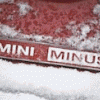Asthe title really, I've been putting together a new dash panel with a number of warning lights and was wondering if the warning lights can be wired in series with the components or not?
What I mean is Power - Switch - Light - Component - Earth
THe more I think about it the more I tihnk they should be wired in parallel, so the current being drawn by the component is going directly through the light, and so the brightness of the bulb doesn't depend on the component.
Am I right?

Dash Warning Lights - Wired In Series Of Parallel?
Started by
paulrockliffe
, May 25 2008 09:54 AM
5 replies to this topic
#1

Posted 25 May 2008 - 09:54 AM
#2

Posted 25 May 2008 - 02:56 PM
In general each warning light is independent of the others. Which warning lights are you dealing with?
The ignition warning light must take a switched live from the ignition switch, pass through the warning bulb, then go off to the field winding connection (small lug) on the alternator. The oil pressure warning light likewise takes it's live feed from a switched terminal on the ignition switch (it can be the same as the charge warning light connection), then the power passes through the lamp and goes off to the switch which provides the ground/earth connection. The high beam indicator takes its power connection from one of the blue/white wires for the headlamps. The power then passes through the lamp and off to an earth/ground point. Turn signal indicator lamps (assuming you use 2) are each wired to their respective left or right side circuit. Power passes from that circuit through the bulb and off to an earth/ground point. Early cars with the single common indicator lamp for turn signals have a direct connection on the flasher for the indicator lamp power. I know the later cars have a brake warning light and I can't tell you how that one is wired in.
The ignition warning light must take a switched live from the ignition switch, pass through the warning bulb, then go off to the field winding connection (small lug) on the alternator. The oil pressure warning light likewise takes it's live feed from a switched terminal on the ignition switch (it can be the same as the charge warning light connection), then the power passes through the lamp and goes off to the switch which provides the ground/earth connection. The high beam indicator takes its power connection from one of the blue/white wires for the headlamps. The power then passes through the lamp and off to an earth/ground point. Turn signal indicator lamps (assuming you use 2) are each wired to their respective left or right side circuit. Power passes from that circuit through the bulb and off to an earth/ground point. Early cars with the single common indicator lamp for turn signals have a direct connection on the flasher for the indicator lamp power. I know the later cars have a brake warning light and I can't tell you how that one is wired in.
#3

Posted 25 May 2008 - 03:03 PM
As above, its not quite so simple as parallel or series, but wiring a bulb in series is definitely not the way to go. You will be asking the bulb filament to withstand whatever current the item being switched on requires. Also, the bulb will be stealing some of the voltage away from whatever you are switching on.....Also, if the warning bulb fails, it will create an open circuit, so nothing will work...!!!
Edited by syholl, 25 May 2008 - 03:05 PM.
#4

Posted 25 May 2008 - 03:53 PM
Thanks chaps, I'm not using any standard switches, lights or wiring, its pretty much a completely custom loom that I'm re-wiring in my Minus. I was referring to warning lights that let me know when the left indicator, headlights, main beam and right indicator is on, but I've re-wired them so the'yre all in parallel with the lights while I was watching the Grandprix. I figured I was right to do it and on opening the lights it was clear they wouldn't take the sort of current that would go through if they were in series. Oil pressure and No-charge warning lights are wired the standard way.
#5

Posted 25 May 2008 - 04:00 PM
As I mentioned above, with the turn signal lamps you should be able to wire them by tapping into the circuit for the appropriate side. passing the current to the indicator lamp, then off to ground. Those lamps will just appear as a slightly higher current drain on the circuit. This is a place where an LED with a dropping resistor will work very nicely.
The high-beam indicator can similarly be tapped into (what on a standard loom) would be the blue/white wire circuit... just like the indicators above. You'll only be drawing a little extra current than standard.
Are you saying you've got an extra indicator just to say that the headlights (high or low) are on? If so, this would be tapped into the supply wire feeding the dimmer switch. It would be hot anytime the headlight switch was turned to the on position regardless of whether high or low beams were selected. This lamp would also have its own dedicated earth/ground.
The high-beam indicator can similarly be tapped into (what on a standard loom) would be the blue/white wire circuit... just like the indicators above. You'll only be drawing a little extra current than standard.
Are you saying you've got an extra indicator just to say that the headlights (high or low) are on? If so, this would be tapped into the supply wire feeding the dimmer switch. It would be hot anytime the headlight switch was turned to the on position regardless of whether high or low beams were selected. This lamp would also have its own dedicated earth/ground.
#6

Posted 25 May 2008 - 06:20 PM
Yep, that's how I've got it done, with a light that comes on with the head lights, then a second light for main beam, I've put pics up on my Jason the Minus thtread actually. Have got all the positve side of the circuit done now, will start the earth loom shortly.......
1 user(s) are reading this topic
0 members, 1 guests, 0 anonymous users















